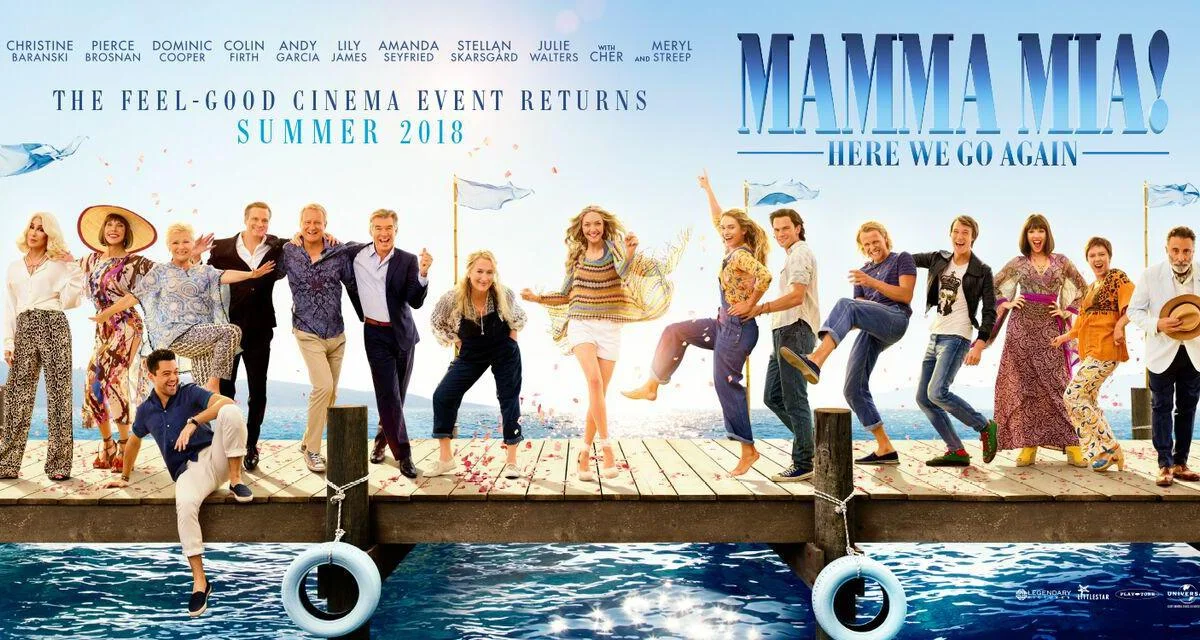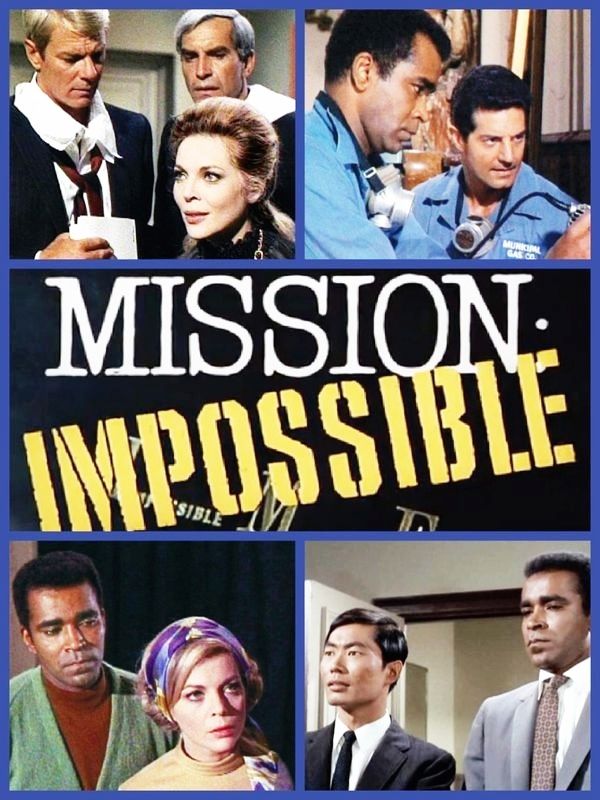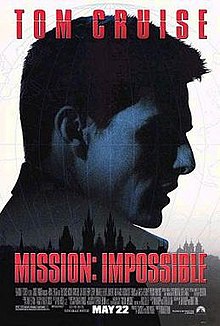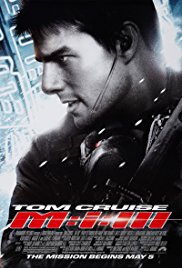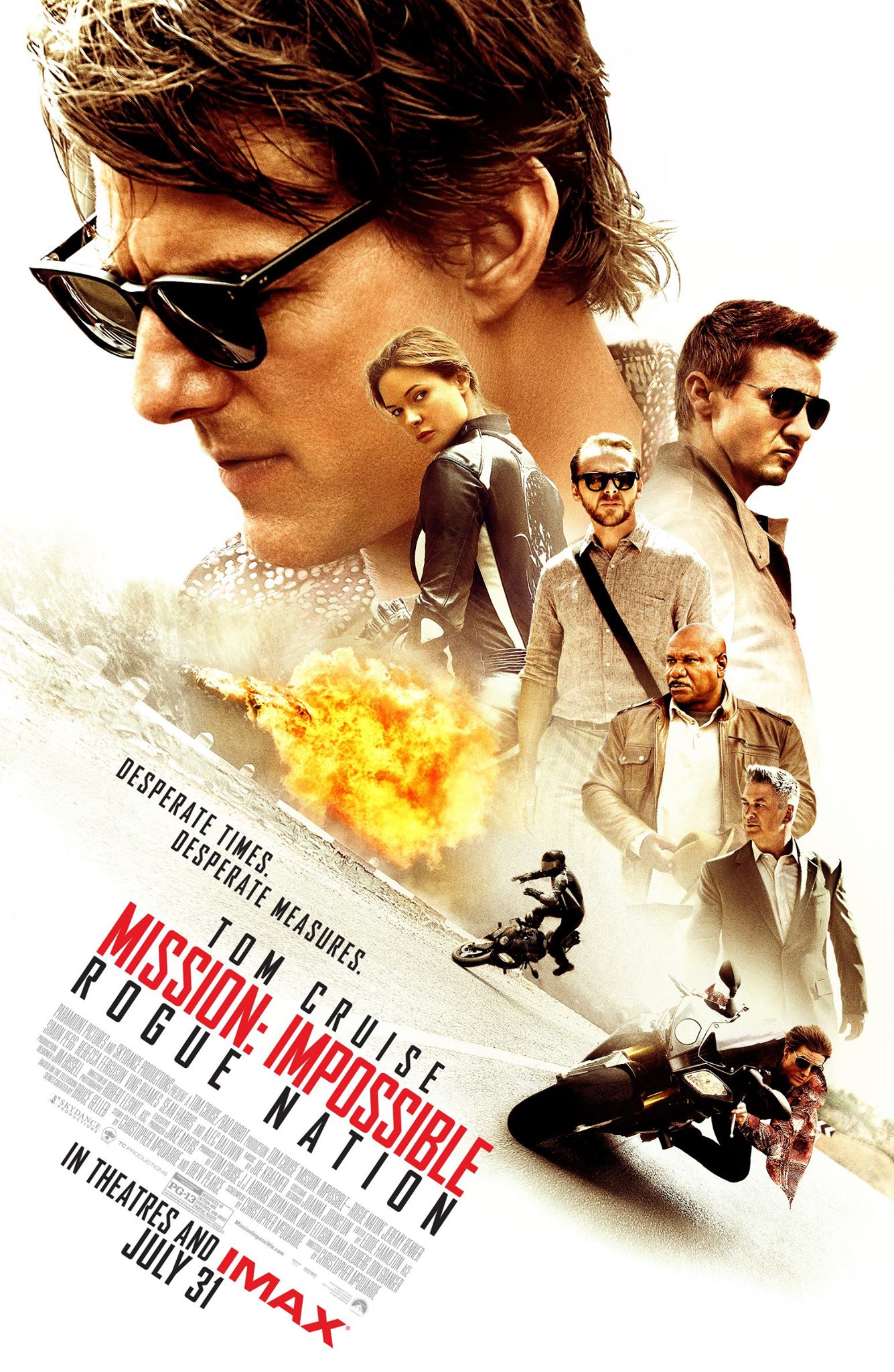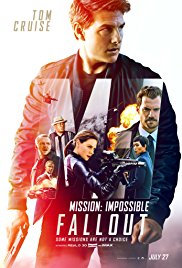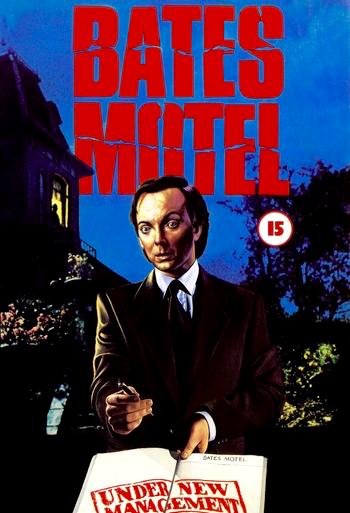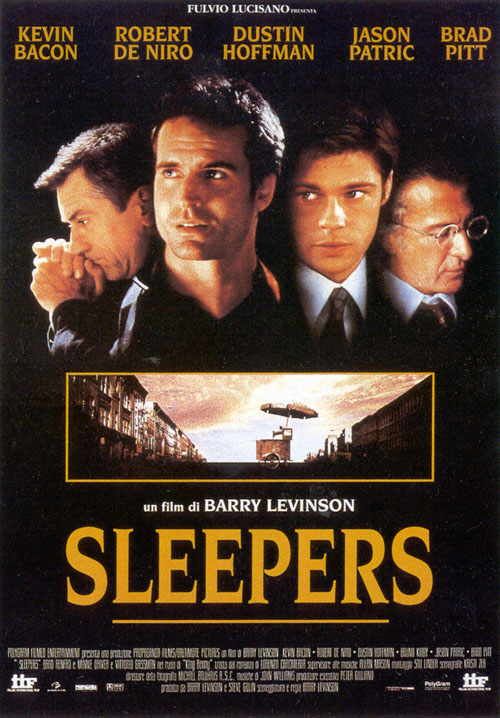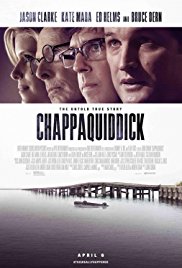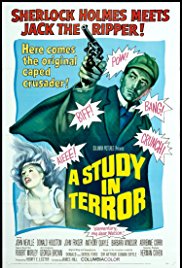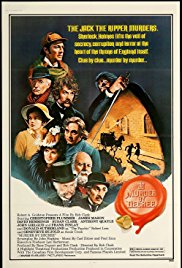To search ALL film reviews, use the search bar below:
Mission: Impossible (1966–Present)
Mission: Impossible – The Complete Series (1966–1973)
C – 8550m (171 Episodes, 50 Minutes each)
Aspect Ratio: 4:3 – Fullscreen
Creator: Bruce Geller
Writers: Bruce Geller, Allan Balter, William Read Woodfield... to view the complete list, click here.
Dir.s: Reza Badiyi, Barry Crane, Paul Krasny... to view the complete list, click here.
Starring: Greg Morris, Peter Lupus, Peter Graves... to view the complete list, click here.
An elite covert operations unit carries out highly sensitive missions subject to official denial in the event of failure, death or capture. Who knew at the time that this show was on the air that it would launch a revival / reboot and a mega successful action film series? This classic show featured quite a stellar cast and scripts that holds the viewer’s interest from start to finish of each episode. The guest stars are fun too. While this has little action compared to the theatrical film series, the performances are such that one doesn’t really think about it. Are there corny lines every now and then? Sure, there is nothing wrong with that. This show is worth watching for two reasons: 1.) The cast is great, and 2.) This is the show that started the television reboot and the hit film series.
Trivia:
Only one hundred twenty missions include the famous warning that the tape will "self-destruct". Five say that the tape will "decompose", one says that it will "destroy itself", twelve instruct Briggs or Phelps to "dispose of" the recording, seven tell them to "destroy" it, and three contain no instructions, but Phelps destroys the recordings anyway. The remaining fifteen missions contain no recorded briefing at all. The reel–to–reel tape was actually in rewind mode when it was shown as “playing” because the tape moved too slowly to be believed when it would actually be playing. This show was not shown in syndication for several years due to the fact that the public became used to Peter Graves as the head of the MIF. When they saw the reruns of the first season of the show with Dan Briggs in the role of the head of the MIF it confused them. Greg Morris and Peter Lupus were the only two actors to stay throughout the course of all the seasons of this show. It should be noted though that Sam Elliot replaced Peter Lupus for about half of the fifth season of the show.
The faceless figure shown lighting a match on the opening credits was series creator Bruce Geller. It wasn’t until the 1988 revival / reboot of the show that a character was created for it – Jim Phelps would be shown lighting it. Steven Hill left the show after only one season for two reasons: 1.) Because the show’s shooting schedule would have had him, an Orthodox Jew, working on the Sabbath and 2.) His behavior was frequently disruptive and would cause the production to shut down. Martin Landau and his then wife Barbara Bain jointly left the show after the third season due to contract disputes after their demands for a raises in their salaries were not met. Most of the non–lead actors on Star Trek (1966–1969) also appeared on this show. Even some of the leads had guest spots on this show. This was likely because both shows were filmed at Desilu Studios.
This show, when it was cancelled in 1973 was the last of the rash of spy shows from the 1960’s. Some others from that time were: The Man From U.N.C.L.E. (1964–1968), Secret Agent (1964–1967), Get Smart (1965–1970), The Wild Wild West (1965–1969), amongst others.
Available on DVD & Digital Copy
Mission: Impossible – The Complete Series (1988–1990)
C – 1645m (35 episodes, 47 minutes each)
Aspect Ratio: 4:3 – Fullscreen
Creator: Bruce Geller
Scriptwriters: Bruce Geller, Ted Roberts, Jeffrey M. Hayes, Robert Brennan, Michael Fisher, Walter Brough, David Phillips, Frank Abatemarco, Dale Duguid, Roger Dunn, Michael Seims, Allan Balter, Robert Hamner, Laurence Heath, Michael Lynn, Arthur Weiss, James Crown, Chip Hayes, Stephen Kandel, Rick Maier, Billy Marshall Stoneking, John Whelpley, Cliff Green, Dan Roberts and Jan Sardi.
Dir.s: Colin Budds, Arch Nicholson, Don Chaffey, Cliff Bole, Rob Stewart, Michael Vejar, Kim Manners, Rod Hardy, Brian Trenchard–Smith and John Jopson.
Starring: Peter Graves, Thaao Penghlis, Anthony Hamilton... to view complete list, click here.
An elite covert operations unit carries out highly sensitive missions subject to official denial in the event of failure, death or capture. This reboot is actually a continuation of the original series. The returning cast is always a pleasure to see and by the same flip of the coin the stellar cast from the original series is greatly missed. Still there is drama and mild action that will keep viewers alert for the 47 minutes per episode.
Trivia:
This series was originally intended to be a Limited Series with the scripts being remakes of the classic episodes from the first series and the original characters being recast with then current actors. Instead, when Peter Graves returned to play his role again, it was changed to be a continuation of the original series. It should be noted that the first five episodes of this series were remakes of classic episodes due to a writers’ strike. Peter Graves, Greg Morris and Lynda Day George all reprise their roles from the original series. Terry Markwell opted not to renew her contract for the rest of Season One because she was dissatisfied with the amount of screen time she got. Terry Markwell was then replaced by Jane Badler. This was one of the first American commercial network shows to be filmed in Australia. After this series, there was a six–year break in the Mission: Impossible timeline, during which the series made the leap from the television screen to the theatrical screen.
Primetime Emmy nominee for: Outstanding Sound Mixing – Drama Series (1989) and Outstanding Sound Editing – Series (1990).
Available on DVD & Digital Copy
Mission: Impossible (1996)
C – 110m
Aspect Ratio: 2.39:1 – Widescreen
A.K.A.: Mission Impossible
Television Series Creator And Writer: Bruce Geller
Story By: David Koepp and Steven Zaillian
Screenplay By: David Koepp and Robert Towne
Exec. Prod.: Paul Hitchcock
Prod.s: Tom Cruise and Paula Wagner
Assoc. Prod.: J.C. Calciano
Dir.: Brian De Palma
Starring: Tom Cruise, Jon Voight, Emmanuelle Beart, Henry Czerny, Jean Reno, Ving Rhames, Kristin Scott Thomas, Vanessa Redgrave, Ingeborga Dapkunaite, Valentina Yakunina, Marek Vasut, Nathan Osgood, Rolf Saxon, Karel Dobry, Andreas Wisniewski, David Shaeffer, Rudolf Pechan, Ricco Ross, Mark Houghton, Annabel Mullion, Garrick Hagon, Sam Douglas, David Schneider, Helen Lindsay, Pat Starr, Richard D. Sharp, Randall Paul, Graydon Gould, Tom Vogel, Michael Rogers, and Laura Brook
Music By: Danny Elfman
An American agent, under false suspicion of disloyalty, must discover and expose the real spy without the help of his organization. A fast–pace action – thriller that will keep viewers in a white–knuckle state for the better part of the film. Director Brian De Palma did a great job at the helm of this film and Cruise and the rest of the cast are in fine form. This was the successful start to the successful film series. Don’t miss it!
Trivia:
In the filming of the iconic scene where Tom Cruise drops from the ceiling and hangs inches about the ground, Cruise’s head kept hitting the ground until he decided to put coins in his shoes for balance. The trick with the disappearing / reappearing CD that Ethan Hunt does to fool Franz Krieger is actual slight of hand, not a camera trick or any other visual effect. Vanessa Redgrave’s role was originally written for a man. The cinematic train sequence took six weeks to shoot at the 007 stage at Pinewood Studios in London, England. According to Martin Landau, in one of the earlier drafts of the script there was the idea to bring back the original cast from the original show just to kill them all off at the beginning of this film. George Clooney was offered the role of Ethan Hunt but turned it down to work in: One Fine Day (1996). Additionally Bruce Willis, John Travolta, Nicolas Cage, Ralph Fiennes, and Mel Gibson were all considered of the role. Brian De Palma originally offered the role of Claire to Juliette Binoche. Al Pacino, Michael Douglas and Robert Redford were all considered for the role of Jim Phelps. Robert Towne rewrote scenes in between takes. Tom Cruise did most of his own stunts.
Followed by: Mission: Impossible II (2000), Mission Impossible III (2006), Mission: Impossible – Ghost Protocol (2011), Mission: Impossible – Rogue Nation (2015), and Mission: Impossible – Fallout (2018).
Rated: [PG–13] – Some Intense Action Violence
Out Of Print on VHS & Laserdisc but Available on Blu–ray, DVD & Digital Copy
Mission: Impossible II (2000)
C – 123m
Aspect Ratio: 2.39:1 – Widescreen
A.K.A.: M.I.: Mission Impossible II, M.I. Mission Impossible 2, Mission: Impossible 2, Mission Impossible II, Mission Impossible 2, M:I – 2, M.I. 2, M:I 2
Creator / Writer: Bruce Geller
Story By: Ronald D. Moore and Brannon Braga
Screenplay By: Robert Towne
Exec. Prod.s: Terence Chang and Paul Hitchcock
Prod.s: Tom Cruise and Paul Wagner
Assoc. Prod.: Michael Doven
Dir.: John Woo
Starring: Tom Cruise, Dougray Scott, Thandie Newton, Ving Rhames, Richard Roxburgh, John Polson, Brendan Gleeson, Rade Serbedzija, William Mapother, Anthony Hopkins (uncredited), Patrick Marber (uncredited), William Morts (uncredited) and Tory Mussett (uncredited).
Music By: Hans Zimmer
IMF Agent Ethan Hunt is sent to Sydney, to find and destroy a genetically modified disease called "Chimera". This entry in the Mission series is by far the best entry. Action is plentiful and well choreographed. The performances are tops and the CGI is great and the makeup is the best of the series. As with the first one there are many white–knuckle moments – including the opening rock climbing. See it!
Trivia:
John Woo’s first cut of this film ran 3 hours, 30 minutes. Tom Cruise’s then wife, Nicole Kidman suggested Thandie Newton. Newton was cast before the script was even written. When Ethan Hunt peals off his mask, it was done with a green screen for each actor. Tom Cruise was told to put his hand in a certain place below his chin and make the motion of pulling something off. The two faces were then put together in post–production (editing), making it look like Cruise took off a mask. The movie was initially rated R but was recut to a PG–13 by toning down violence considerably. This was the first film that Metallica agreed to write a song for.
Production was delayed because of Tom Cruise working in Eyes Wide Shut (1999) with Stanley Kubrick for over a year. This was the highest grossing film of 2000. The role of Commander Swanbeck was offered to Ian McKellen and Anthony Hopkins. Tom Cruise offered the chance to direct the sequel to Brian De Palma, but he turned it down. Oliver Stone was the first director attached to this film but he dropped out reportedly due to scheduling conflicts. This entry in the series had the only appearance of Anthony Hopkins as Mission Commander Swanbeck. Tom Cruise did most of his own stunts.
Sequel to: Mission: Impossible (1996). Followed by: Mission: Impossible III (2006), Mission: Impossible – Ghost Protocol (2011), Mission: Impossible – Rogue Nation (2015), and Mission: Impossible – Fallout (2018).
Rated: [PG–13] – Intense Sequences Of Violent Action & Some Sensuality
Available on Blu–ray, DVD & Digital Copy
Mission: Impossible III (2006)
C – 126m (full film) / 124m (edited)
Aspect Ratio: 2.39:1 – Widescreen
A.K.A.: Mission: Impossible 3, Heyday, M:I: III, M.I. III, M:I III, M:I:3, M:I 3
Television Creator & Writer: Bruce Geller
Screenplay By: Alex Kurtzman, Roberto Orci and J.J. Abrams
Exec. Prod.s: Sanping Han, Stratton Leopold and Buting Yang
Sup. Prod.: Bill Borden
Line Prod.: Enzo Sisti
Prod.s: Tom Cruise, Paul Wagner and Haicheng Zhao (as Zhao Haicheng)
Co–Prod.: Arthur Anderson, Tao Jiang and Doming Shi
Assoc. Prod.: Guichun Wang
Dir.: J.J. Abrams
Starring: Tom Cruise, Philip Seymour Hoffman, Ving Rhames, Michelle Monaghan, Jonathan Rhys Meyers, Keri Russell, Maggie Q, Simon Pegg, Eddie Marsan, Laurence Fishburne, Bahar Soomekh, Jeff Chase, Michael Berry, Jr., Carla Gallo, Bellamy Young, Paul Keeley, Jane Daly, Greg Grunberg, Tracy Middendorf, Aaron Paul, Sean O’Bryan, Bruce French, Ellen Bry, James Shaklin, Michelle Arthur, and Barney Cheng
IMF Agent Ethan Hunt comes into conflict with a dangerous and sadistic arms dealer who threatens his life and his fiancée in response. This sequel is a tad tired after the last entry but still entertaining. Great cast and action but the rest is negligible. Not a bad start for J.J. Abrams as a director! Worth seeing!
Trivia:
Curious people would loiter around the main unit of this film in Italy, so a faux second unit working with women dressed as nuns and women in bikinis to lure them away from the main unit so that they could shoot what they needed for the actual film. After the success of: Shaun Of The Dead (2004), Simon Pegg was asked if he was going to pursue an acting career in Hollywood. He jokingly replied, “It’s not like I’m going to be in Mission: Impossible III.” Tom Cruise did most of his own stunts.
This was J.J. Abrams directorial debut. Scarlett Johansson was cast early on but pulled out of the film and was replaced by Keri Russell. Maggie Q had to learn how to drive for her role. In the bonus features on Blu–ray and DVD copies of this film it was revealed that Maggie Q’s high heal shoe got stuck on the acceleration peddle causing her to lightly crash into a parked car. Rachel McAdams turned down the role that went to Michelle Monaghan. Katie Holmes, Lindsay Lohan, Elisha Cuthbert and Jessica Alba were all considered for the role of Lindsay Ferris, which is played by Keri Russell here. David Fincher was slated to direct this but backed out to make: The Lords Of Dogtown (2005). When Fincher was slated to direct, Sylvestre Stallone was being courted to play the main villain. There was a false rumor that Brad Pitt was going to replace Tom Cruise as Ethan Hunt. Kelly Brook was at one point slated to appear in this film.
Sequel to: Mission: Impossible (1996) and Mission: Impossible II (2000). Followed by: Mission: Impossible – Ghost Protocol (2011), Mission: Impossible – Rogue Nation (2015), and Mission: Impossible – Fallout (2018).
Rated: [PG–13] – Intense Sequences Of Frenetic Violence And Menace, Disturbing Images & Some Sensuality
Available on Blu–ray, DVD & Digital Copy
Mission: Impossible – Ghost Protocol (2011)
C – 132m
Aspect Ratio: 2.39:1 – Widescreen
Aspect Ratio: Mission: Impossible IV – Ghost Protocol, Mission Impossible IV – Ghost Protocol, Mission: Impossible 4 – Ghost Protocol, Mission: Impossible IV, Mission: Impossible 4, Mission Impossible IV, Mission Impossible 4, M:IIVGP, MIIVGP, M:I4GP, MI4GP, M:IGP, MIGP, Aries, M:I4, MIIV. MI4
Television Creator & Writer: Bruce Geller
Characters By: Steven Zaillian and David Koepp
Screenplay By: Josh Appelbaum and Andre Nemec
Exec. Prod.s: David Ellison and Dana Goldberg
Prod.s: J.J. Abrams, Tom Cruise
Dir.: Brad Bird
Starring: Tom Cruise, Paula Patton, Simon Pegg, Jeremy Renner, Michael Nyqvist, Samuli Edelmann, Ivan Shvedoff, Anil Kapoor, Josh Holloway, Michelle Monaghan (uncredited), Ving Rhames (uncredited) and Tom Wilkinson (uncredited).
The IMF is shut down when it's implicated in the bombing of the Kremlin, causing Ethan Hunt and his new team to go rogue to clear their organization's name. This is the WORST entry in the franchise. This reviewer cannot say enough bad things about it. Terrible CGI, acting is over the top or dull and the story is less than nothing in existence. The only two things that can be said FOR this film are that the makeup is passible and there is a nice use of the song: “Ain’t That A Kick In The Head” sung by Dean Martin. If at all possible ignore this entry and go for the fifth one when you finish the third entry in the series. If one MUST watch this, they will be doing so at the risk of their own intellectual and entertainment peril!
Trivia: Tom Cruise did most of his own stunts. This was Brad Bird’s directorial debut.
Sequel to: Mission: Impossible (1996), Mission: Impossible II (2000) and Mission: Impossible III (2006). Followed by: Mission: Impossible – Rogue Nation (2015), and Mission: Impossible – Fallout (2018).
Rated: [PG–13] – Sequences Of Intense Action & Violence
Available on Blu–ray, DVD & Digital Copy
Mission: Impossible – Rogue Nation (2015)
C – 131m
Aspect Ratio: 2.39:1 – Widescreen
A.K.A.: Mission: Impossible V – Rogue Nation, Mission: Impossible 5 – Rogue Nation, Mission Impossible – Rogue Nation, Mission: Impossible V, Mission: Impossible 5, Mission Impossible V, Mission Impossible 5, M:IV – RN, M:I5 – RN, M:I – RN, M:IVRN, MIVRN, M:IRN, M:I V, M:I 5, M:IV, M:I5, MIV, MI5
Television Show Creator & Writer: Bruce Geller
Story By: Christopher McQuarrie and Drew Pearce
Writer – Dir.: Christopher McQuarrie
Prod.s: J.J. Abrams, Tom Cruise, David Ellison, Dana Goldberg and Don Granger.
Starring: Tom Cruise, Jeremy Renner, Simon Pegg, Rebecca Ferguson, Ving Rhames, Sean Harris, Simon McBurney, Tom Hollander, Alec Baldwin, Nigel Barber, William Roberts, Robert Maaser, Eva–Marie Becker, Jamie Buchan (uncredited), Jill Buchanan (uncredited), John Carr (uncredited), Jamie B. Chambers (uncredited), Tom Dab, Alexander Hathaway (uncredited), Helena Holmes (uncredited), Philip Howard, Peter Stanford, Glenn Webster and Belle Williams.
Ethan and team take on their most impossible mission yet, eradicating the Syndicate - an International rogue organization as highly skilled as they are, committed to destroying the IMF. This was a huge step up from the disaster that was the previous entry in this blockbuster series. The acting, writing, CGI and makeup are back on stable footing. The issue here is that it is a tad too long and slow spots become more pronounced because of it. Still an agreeable film to watch… Recommended.
Trivia:
Tom Cruise did most of his own stunts. Tom Cruise and Simon Pegg performed all their own driving stunts. It took ten days to film a 90–second involving Ethan Hunt, Tom Cruise, suspended on the airplane. When training for the underwater scene, Tom Cruise could hold his breath for six minutes. Paula Patton and Maggie Q were set to reprise their roles from: Mission: Impossible – Ghost Protocol (2011), but dropped out due to scheduling conflicts. Benedict Cumberbatch was the first actor considered to play the villain. In an interview with The Q&A With Jeff Goldsmith, Tom Cruise stated that the gray suit worn during the opening plane sequence was a direct homage to Roger Thornhill (Cary Grant) in Alfred Hitchcock’s North By Northwest (1959), who wears a similarly colored suit in the classic plane sequence. Tom Cruise was attached to: The Man From U.N.C.L.E. (2015), but dropped out to make this film. Henry Cavill replaced him. They would go on to be in: Mission: Impossible – Fallout (2018), together.
Sequel to: Mission: Impossible (1996), Mission: Impossible II (2000), Mission: Impossible III (2006) and Mission: Impossible – Ghost Protocol (2011). Followed by: Mission: Impossible – Fallout (2018).
Rated: [PG–13] – Sequences Of Action And Violence, & Brief Partial Nudity
Available on Blu–ray, DVD & Digital Copy
Mission: Impossible – Fallout (2018)
C – 147m
Aspect Ratio: 2.39:1 – Widescreen
A.K.A.: M:I VI – Mission Impossible, M:I 6 – Mission Impossible, Mission: Impossible VI, Mission: Impossible 6
Characters From The TV Series By: Bruce Geller
Writer – Dir.: Christopher McQuarrie
Prod.s: J.J. Abrams and Tom Cruise
Starring: Tom Cruise, Henry Cavill, Ving Rhames, Simon Pegg, Rebecca Ferguson, Sean Harris, Vanessa Kirby, Michelle Monaghan, Wes Bentley, Alec Baldwin, Kristoffer Joner, Wolf Blitzer and Raphael Joner.
Ethan Hunt and his IMF team, along with some familiar allies, race against time after a mission gone wrong. This is simultaneously one of the best entries in the series but is also the worst to try and review. If no analysis is done on this film it stands strong with a three out of four star rating. The minute one tries to say, “this works because…” the film falls apart. For sure: there is good tension built several times throughout the film, the action is high octane, the cinematography is good and CGI and makeup are tops. Unfortunately: These more than capable actors can be found chewing the scenery (over acting) at various points in the film, the story is slightly contrived, the script has a few too many corny lines, and dramatic scenes are on the melodramatic side of things and are unintentionally funny. Still there are some well–planned gags in the film that score bulls eyes. If one doesn’t think about the film, it works. Try to see the film doing just that. Recommended without scrutiny.
Trivia:
This film had 3,000 setups, thirteen helicopters, six pregnancies, five hiatuses, four–weeks of aerial photography, three continents, two winters and one broken ankle. Tom Cruise trained for and entire year to perform the HALO (High Altitude Low Opening) stunt in this film. While filming a scene in August 2017, Tom Cruise fractured his ankle in a stunt where he leaped from a building. Production was halted for several weeks / 8 weeks (depending on the source), but the July 2018 release date was kept. The footage from that stunt was used both in the trailers for this film and this film itself. At a running length of 147 minutes or 2 hours 27 minutes, this was the longest Mission: Impossible film up to that point. This film was green–lit several days before the release of: Mission: Impossible – Rogue Nation (2015). Solomon Lane was the first villain to appear in two entries in this series of film.
Jeremy Renner was not in this film due to his obligations to the Marvel universe. Rebecca Ferguson was pregnant while filming this movie. She was about seven months pregnant when filming was completed. Rebecca Ferguson was also the first actress to appear in two leading role parts in two entries in this series. Christopher McQuarrie was the first director from this series to direct more than one film in this series. Tom Cruise and Ving Rhames are the only actors to appear in all the Mission: Impossible films. Simon Pegg started in the series in Mission: Impossible III (2006). Henry Cavill, who is in this film with Tom Cruise, replaced Cruise in: The Man From U.N.C.L.E. (2015). Michelle Monaghan’s appearances in this series were: Mission: Impossible III (2006), Mission: Impossible – Ghost Protocol (2011) and this film. Tom Cruise did most of his own stunts.
In June 2017, Tom Cruise, Michelle Monaghan and Simon Pegg arrived in New Zealand to begin filming scenes. This marked Tom Cruise’s first time in the country since filming: The Last Samurai (2003). This film was shot in 161 days. The filming took almost an entire year due to having to halt production for a few months due to Tom Cruise’s broken ankle. As usual Tom Cruise did most of his own stunts for this film. This was the first Mission: Impossible film to be released in 3D. Post–Production on this film was completed on July 3, 2018; Tom Cruise was shown the completed film for the first time on July 8, 2018; and this film was finally released in 2D and 3D on July 27, 2018.
Sequel to: Mission: Impossible (1996), Mission: Impossible II (2000), Mission: Impossible III (2006), Mission: Impossible – Ghost Protocol (2011), and Mission: Impossible – Rogue Nation (2015).
Rated: [PG–13] – Violence & Intense Scenes Of Action, & Brief Strong Language




